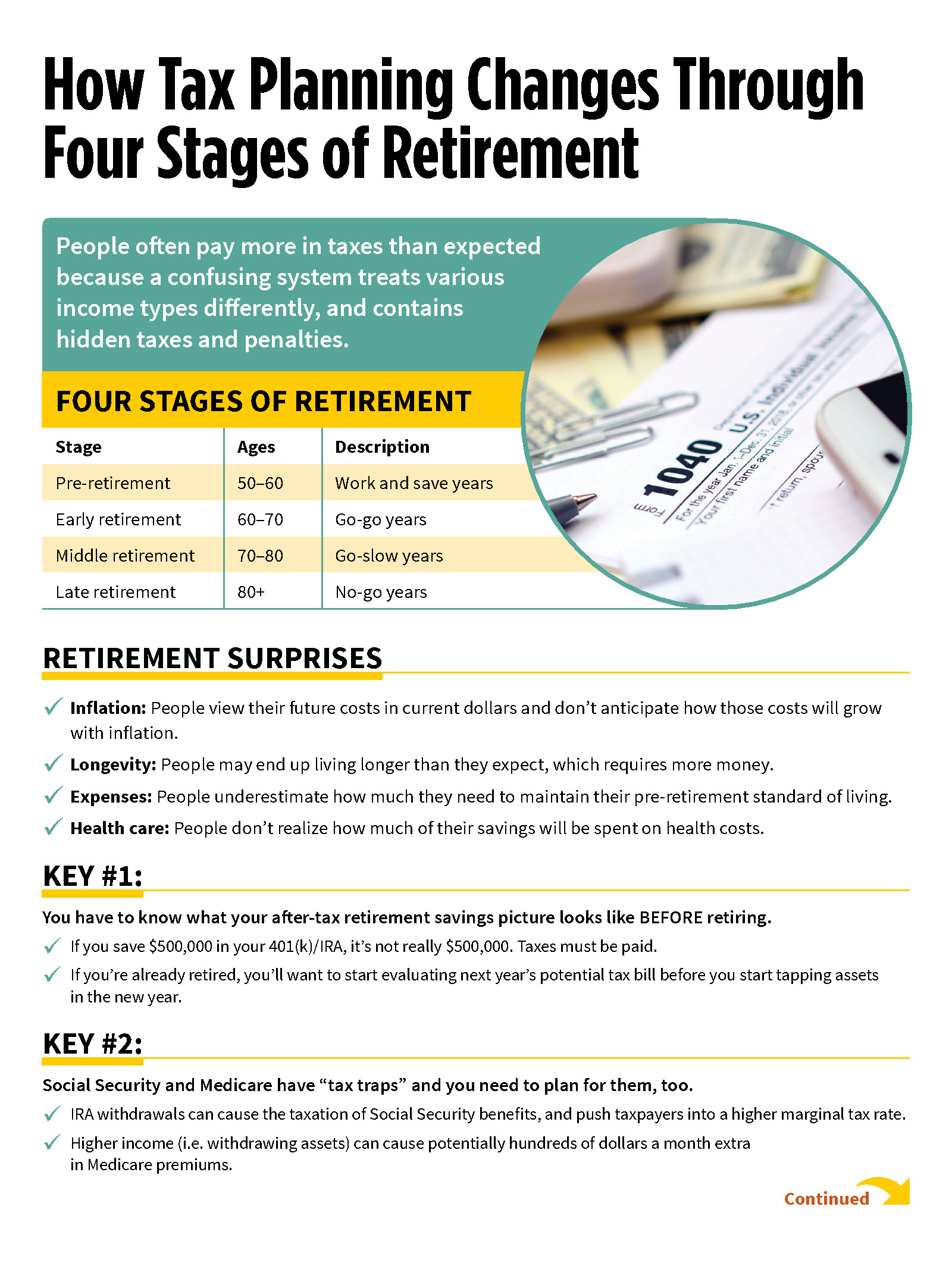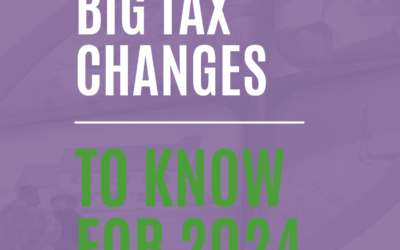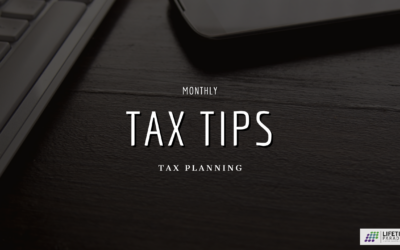Tax Planning
How Tax Planning Changes Throughout 4 Stages of Retirement
People often pay more in taxes than expected because a confusing system treats various income types differently, and contains hidden taxes and penalties.
Because your tax exposure will change throughout retirement, you need a tax strategy.
4 Stages of Retirement
Pre-Retirement
Ages 50-60 — Work and save years
Early Retirement
Ages 60-70 — Go-go years
Middle Retirement
Ages 70-80 — Go-slow years
Late Retirement
Ages 80+ — No-go years
Retirement Surprises
- Inflation: People view their future costs in current dollars and don’t anticipate how those costs will grow with inflation.
- Longevity: People may end up living longer than they expect, which requires more money.
- Expenses: People underestimate how much they need to maintain their pre-retirement standard of living.
- Health Care: People don’t realize how much of their savings will be spent on health costs.
Key #1
You have to know what your after-tax retirement savings picture looks like BEFORE retiring.
- If you save $500,000 in your 401(k)/IRA, it’s not really $500,000. Taxes must be paid.
- If you’re already retired, you’ll want to start evaluating next year’s potential tax bill before you start tapping assets in the new year.
Key #2
Social Security and Medicare of “tax traps” and you need to plan for them, too.
- IRA withdrawals can cause the taxation of Social Security benefits, and push taxpayers into a higher marginal tax rate.
- Higher income (i.e. withdrawing assets) can cause potentially hundreds of dollars a month extra in Medicare premiums.
Key #3
You must plan how and when you will use taxable, tax-deferred, and tax-free assets to manage your income and tax brackets efficiently.
- Consider starting to draw down IRAs now, so that your required minimum distributions (RMDs) won’t have as large an effect on Social Security taxation and Medicare premiums.
- Also consider “filling your tax bracket” in lower income years through Roth conversions or selling appreciated stock, to take advantage of a lower tax rate.
- Think about donating your RMDs directly to charity to avoid paying income tax on the distributions, through what is known as a qualified charitable distribution (QCD).
Key #4
Organize your assets for your family’s benefit—estate planning still matters!
- If you have a terminal illness, make sure to think about step-up basis strategies.
- There are multiple ways to leave IRAs as an inheritance; you need to make sure your heirs get the best and easiest transfer.
- Long-term care is a major concern for many people. You need to plan how you will fund this likely expense, and still leave an inheritance for your heirs.
Solution:
Because your tax exposure will change throughout retirement, you need a tax strategy that:
- Anticipates how and when you tap assets to cover your personal expenses.
- Understands the range of taxes you will face at various stages.
- Manages your actions so you pay as a low a tax rate as possible.


SERVICES WE OFFER RELATED TO THIS TOPIC
The information contained in this post is for general use and educational purposes only. However, we do offer specific services to our clients to help them implement the strategies mentioned above. For specific information and to determine if these services may be a good fit for you, please select any of the services listed below.
The 4x4 Financial Independence Plan ℠
The Smart Social Security Benefits Maximizer/Retirement Healthcare Expense Estimator ℠
Retirement Planning
Tax Planning
Coaching and Consulting
Your Co-Owned Business Probably Needs a Buy-Sell Agreement
Tax PlanningBradford Tax InstituteSay you’re a co-owner of an existing business. Or you might be buying an existing...
Big Tax Changes to Know for 2024
Financial Guides2024 has brought some big tax changes with it. It’s essential to stay informed about these...
The Smart Tax Planning Newsletter March 2024
Tax PlanningIn This Issue: IRAs for Young Adults Get Up to $32,220 in Sick and Family Leave Tax Credits New Crypto Tax...






